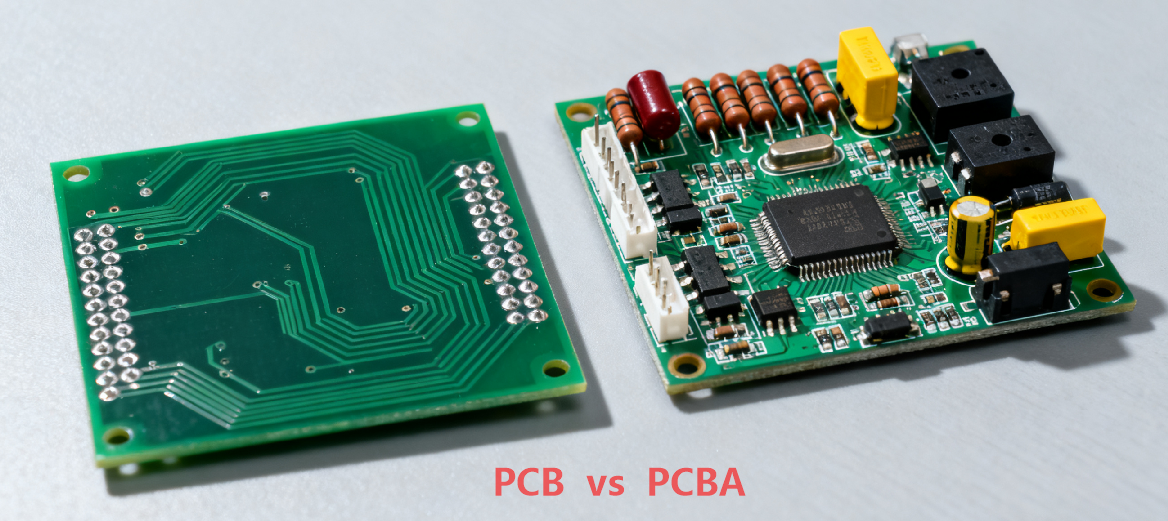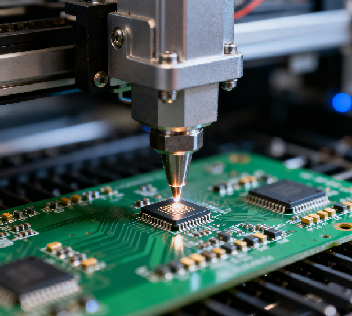What is the Difference Between PCB and PCBA?
Core Concepts: What Are PCB and PCBA?

Differences in the Design Process: From PCB to PCB Assembly Guide

The Essential Distinction in Production: From PC Board Fabrication to PCB Assembly Manufacturing
The production processes for PCB and PCBA are sequential but entirely different manufacturing stages.
The PCB manufacturing process transforms the design blueprint into a physical entity and primarily includes:
Inner Layer Fabrication and Lamination: For multi-layer boards, the inner layer circuits are created first, then pressed together with prepreg and copper foil. Drilling: Holes for vias (to connect layers) and component mounting are drilled into the board. Copper Deposition and Plating: A conductive copper layer is formed on the walls of the holes to connect circuits between different layers. Outer Layer Imaging and Etching: The outer layer circuit pattern is transferred to the copper foil, and excess copper is etched away. Solder Mask and Silkscreen: A solder mask is applied to protect the circuits, and text and symbols are printed for assembly guidance. Surface Finish and Testing: The component pads are treated with a surface finish (e.g., HASL, ENIG) to improve solderability, and electrical performance is checked using methods like flying probe testing.
Solder Paste Printing: A stencil is used to apply solder paste accurately onto the PCB pads. Component Placement: Automated pick-and-place machines use coordinate files to rapidly and precisely place Surface-Mount Devices (SMDs) onto the board. Reflow Soldering: The board, with components placed, is passed through a reflow oven where the solder paste melts and then cools, securely soldering the components to the PCB. Through-Hole Assembly and Wave Soldering: For some through-hole components, manual or automated insertion (DIP) is required, followed by wave soldering. Cleaning and Testing: Flux residues are cleaned from the board, and In-Circuit Testing (ICT) and Functional Testing (FCT) are performed to ensure the PCBA functions correctly.
We can manufacture PCB within 2-7 days, and complete PCBA production within 2-3 weeks according different demand of clients.
Comparison of Applications, Types, and Supply Chain Differences
Conclusion: The Core Differences at a Glance
In Essence: A PCB is an "empty board," while a PCBA is a "populated, functional board." In Process: PCB fabrication must occur before PCBA assembly can begin. They are two consecutive manufacturing stages. In Function: A PCB only provides a platform for electrical connections and has no function on its own; a PCBA constitutes an electronic module capable of performing specific tasks. In Cost: The cost of a PCBA is significantly higher than that of a PCB, as it includes the cost of the bare board, all electronic components, as well as the expenses for assembly, testing, and labor.

